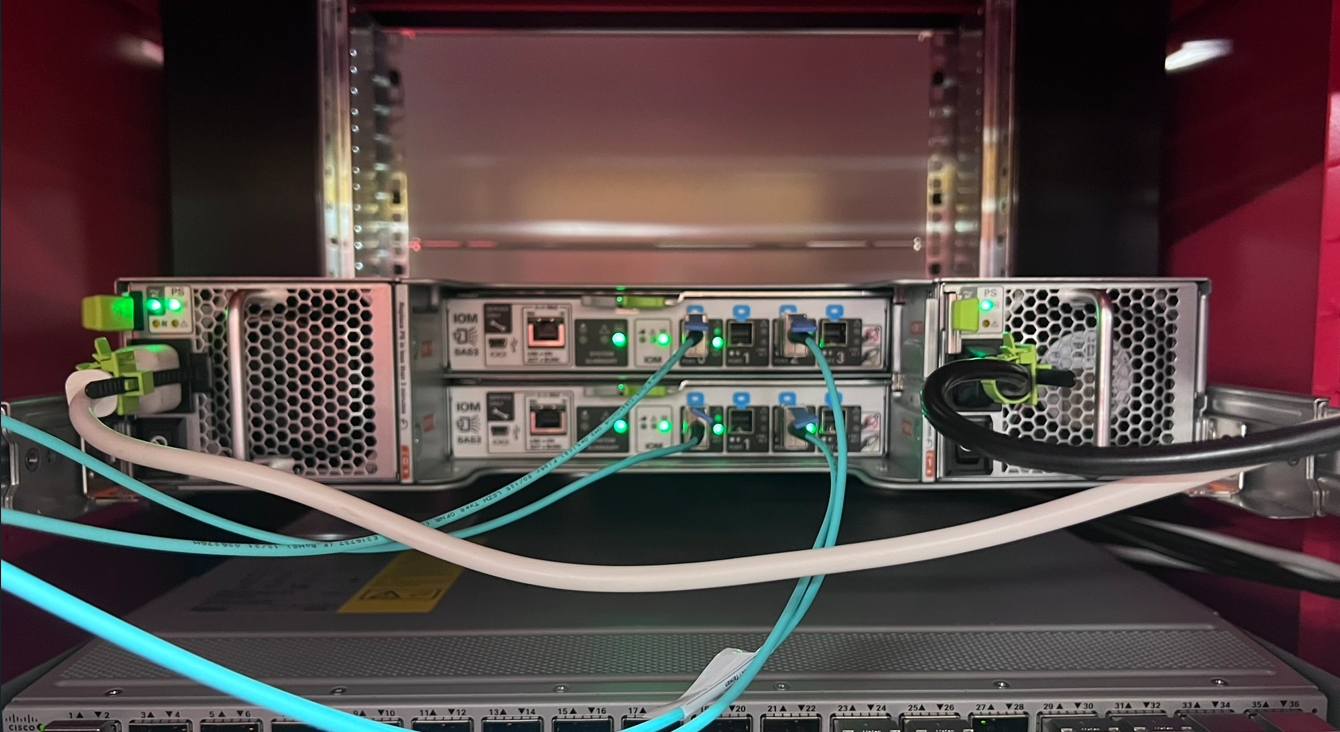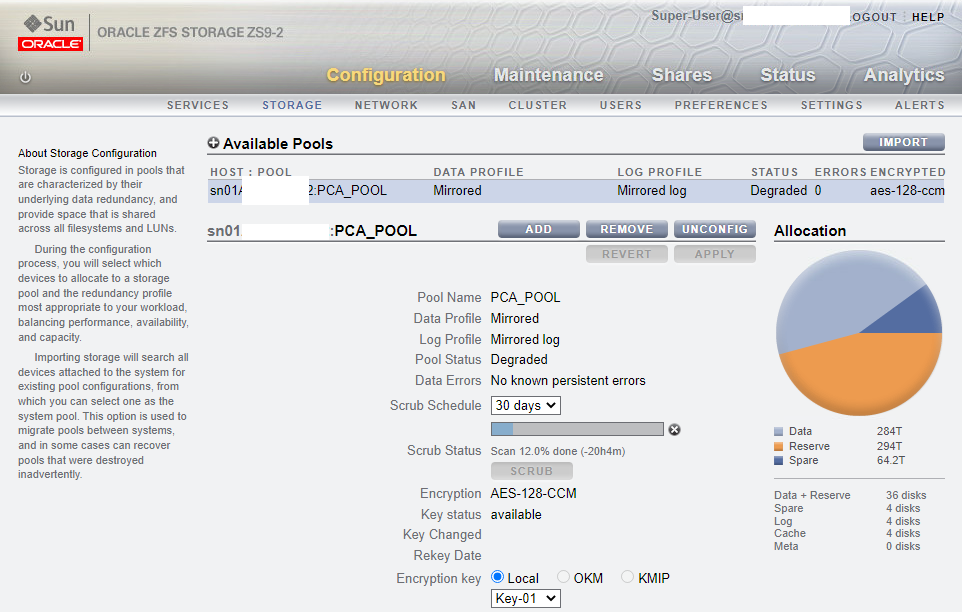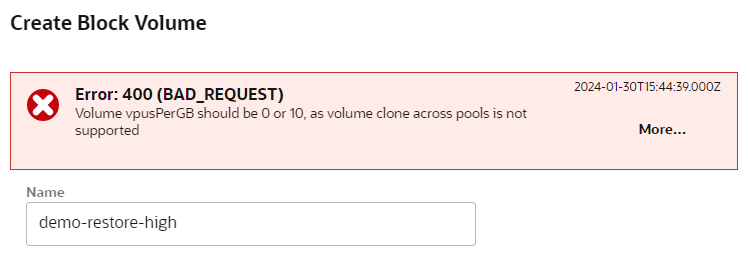Situation
The Oracle Private Cloud Appliance X9-2 was delivered at the end 2022 with high capacity storage. For the Oracle PCA X9-2, there are two distinct storage types available, differentiated by their disk characteristics such as type, size, and whether they are HDDs or SSDs. The standard block size for a Block Volume in this system is set at 8k. However, if your specific workload requires a different block size, you can customize the Block Volume at the time of its creation using the tag ‘PCA_blocksize’ (this aspect will be explored in a separate test). The disk shelves within the system are interconnected using dual 100Gb interfaces. Two variants are available:
| High Capacity – DE3-24C | High Performance – DE3-24P | |
| Disks | 20x 18 TB, SAS-3, 3.5-inch, 7200 RPM HDDs | 20x 7.68TB SAS-3 2.5-inch SSDs |
| Read Cache | 2x read SSD accelerator | |
| Write Cache | 2x write SSD accelerator | 2x write SSD accelerator |
| List Price | 47,300 USD | 116,477 USD |
During the first ramp-up and migration, after two weeks we switched back to the old systems. This decision was made because the performance of the high-capacity (HC) storage, which relied on classic HDDs, did not meet the I/O requirements. Especially “noisy neighbors” made a huge impact of the general performance. So customer decided, to order High Performance storage. This article will guide you through the process of integrating an additional storage shelf into an operational Oracle Private Cloud X9-2 without causing any downtime.
Datacenter
Let’s rack the Disk Shelf in’
There is no downtime for the PCA, nor is there a need to power off or power-cycle any components. The storage shelf is automatically recognized in two areas:
a) within the ZFSSA storage system, and
b) in the Customer Enclave User Interface.
This are the views from an Oracle Private Cloud Appliance after it was re-racked to meet specific data center requirements.
Back
Front
ZFS Storage Appliance BUI
Right after powering on the storage shelf, a new disk pool named ‘PCA_POOL_HIGH’ becomes available. In the Browser User Interface (BUI) log, found under ‘Maintenance -> LOGS’, you will notice a message indicating this.
FRU '/ORACLE-DE3-24P.2000XYABCD2/' has been added to the system. [proxied from sn01AK0012345]
Storage Pool View Before
Storage Pool View After
Disk Shelf Details
Here you see the 20 SSD for data and HDD20/HDD21 for logging. There is no read cache as it is in the High Capacity storage.
Customer Enclave User Interface
Now the Block Volume parameter for High Performance can be used. Slide the button to the right, in the background a new iSCSI export is created on the High Performance storage pool and can be attached to any virtual machine. If you enable the slider but no HP storage is attached, you get an error: Error 400 (BAD_REQUEST).
Slider
To create a new block volume, proceed as you normally would, but make sure to toggle the “Enable High Performance” option to the ‘on’ position before submitting your request.
Within a few seconds, the block volume is created and ready for use. The flag displayed on the right side distinctly marks this block volume as a high-performance block volume.
Boot Volume Performance Settings
It’s important to remember regarding boot volumes: By default, when a new instance is created, the volume is set up on high-capacity storage. To alter the performance settings, you must choose the option to ‘specify a custom boot volume’.
It’s crucial to note that once the block volume is created, changing its performance level is not feasible. Attempting to alter the performance using a backup of the block volume will result in an error message.
Similarly, if you attempt to clone a boot volume and modify its performance level, you will encounter the same issue. Although this functionality is available in OCI cloud, it is my hope that it will be supported in future software releases for this system.
Performance
At present, we don’t have any performance data available to share. We plan to conduct and share performance measurements using SLOB in February 2024.









